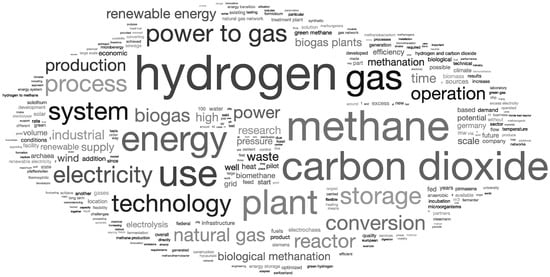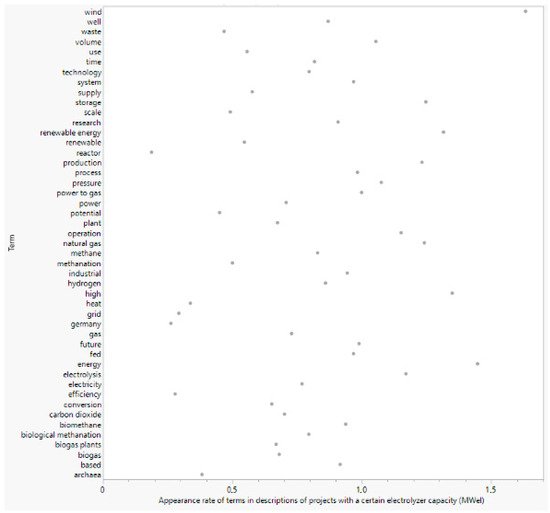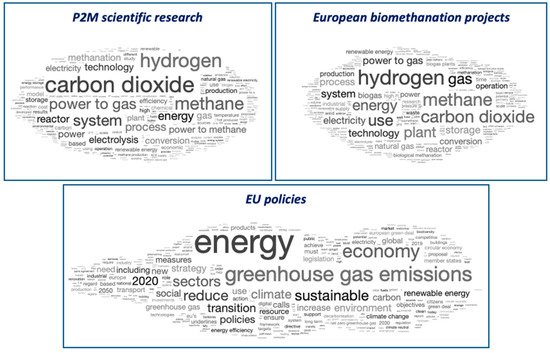In line with the long-term strategy of the European Union to become climate-neutral, the energy storage challenge that is induced by volatile renewable electricity production (e.g., with rapidly growing photovoltaic capacities) must be handled. The power-to-methane technology is promising for long-term, high-capacity energy storage. Currently, there are two different industrial-scale methanation methods: the chemical one (based on the Sabatier reaction) and the biological one (using microorganisms for the conversion). The second method can be used not only to methanize the mixture of pure hydrogen and carbon dioxide but also to methanize the hydrogen and carbon dioxide content of low-quality gases, such as biogas or deponia gas, enriching them to natural gas quality; therefore, the applicability of biomethanation is very wide.
- biomethanation
- power-to-methane
1. Biomethanation Projects and Industrial-Scale Facilities in Europe
-
“Biological biogas upgrading in a trickle-bed reactor” (Tulln/Donau, Austria, 2013);
-
“Biocatalytic methanation” (Cottbus, Germany, 2013);
| Projects | Country | City | Start of the Project | Electrolyzer Capacity (MWel) | Status | Source of Status Information |
|---|---|---|---|---|---|---|
| PtG-Emden | Germany | Emden | 2012 | 0.312 | Closed | [2][18] |
| PtG am Eucolino | Germany | Schwandorf | 2013 | 0.108 | In operation | [11][61] |
| P2G-Foulum Project | Denmark | Foulum | 2013 | 0.025 | Closed | [12][13][62,63] |
| SYMBIO | Denmark | Lyngby | 2014 | - | Closed | [14][64] |
| W2P2G | Netherlands | Wijster | 2014 | 0.400 | In operation | [15][65] |
| BioPower2Gas | Germany | Allendorf | 2015 | 0.300 | Closed | [16][17][66,67] |
| GICON-Großtechnikum | Germany | Cottbus | 2015 | - | In operation | [18][19][68,69] |
| Energiepark Pirmasens-Winzeln | Germany | Pirmasens | 2015 | 1.800 | In operation | [20][70] |
| Mikrobielle Methanisierung | Germany | Schwandorf | 2015 | 0.275 | - | [21][22][71,72] |
| Biogasbooster | Germany | Straubing | 2015 | - | In operation | [23][73[24],74] |
| BioCat Project | Denmark | Kopenhagen/Avedore | 2016 | 1.000 | Closed | [25][26][75,76] |
| Power to Mobility (MicroPyros GmbH) | Germany | Weilheim-Schongau | 2017 | 0.250 | Under development | [27][77] |
| STORE&GO | Switzerland | Solothurn/Zuchwil | 2018 | 0.350 | Closed | [28][78] |
| ORBIT 1st site | Germany | Regensburg | 2018 | - | Closed | [29][79] |
| BIOCO2NVERT | Germany | Dörentrup | 2018 | - | Under development | [3][53] |
| HYCAUNAIS | France | Saint-Florentin | 2018 | 1.000 | Under development | [5][6][30][55,56,80] |
| Dietikon Microbenergy | Switzerland | Dietikon | 2019 | 2.500 |
- “Forschungsanlage am Technikum des PFI” (Pirmasens, Germany, 2013);
-
“BioPower2Gas-Erweiterung” (Allendorf (Eder), Germany, 2016);
-
“Biologische Methanisierung in Rieselbettreaktoren” (Garching, Germany, 2016);
-
“Einsatz der biologischen Methanisierung […]” (Hohenheim, Germany, 2016);
-
“Biocatalytic methanation of hydrogen and carbon dioxide in a fixed bed bioreactor” (Helsinki, Finland, 2016).
-
In contrast to the well-known biogas-based biomethanation projects, the BIOCO2NVERT project aims to implement a biocatalytic P2M facility at one of the largest bioethanol plants of Europe. According to the description of the Innovation Land Lab, installation and commissioning are the next steps of the project [3][53]. The project started in 2018, and the cooperation partners are Klärgastechnik Deutschland GmbH, MicrobEnergy GmbH, PRG Precision Stirrer Gesellschaft GmbH, and Südzucker AG [4][54].
2. Key Topics of Future Implementation
2.1. Key Topic 1: The Role of Biomethanation in the Hydrogen Economy

2.2. Key Topic 2: Opening New Ways besides Biogas Plants to Store More Renewable Electricity/Hydrogen

- (a)
-
at the small scale, the focus is on the “efficiency” of the “process”, the “reactor” structure, the microorganisms (“archaea”), and the “biogas” input from “biogas plants”, which contains “carbon dioxide” to “convert” it into “methane”.
- (b)
-
at the large scale, the emphasis is on the “volume” of “wind” or other “renewable energy” and the “production” of “methane”, which can be “fed” into the “natural gas” for “energy” “storage” purposes. (Words in quotation marks refer to the empirical data.)
2.3. Key Topic 3: From Technology Development towards Achieving “Future” Benefits

-
From 2013 to 2016/2017, the emphasis was on “research” and “pilot” implementation; moreover, the fundamental characteristics of the process (e.g., using “excess” “solar” energy, “conversion” into “gas”, connection to the “grid”, and/or “biogas plants”).
-
From 2016/2017 to 2020/2021, broader themes appeared, such as the “future” “potential” of the “technology” realized by a “company”, utilizing “renewable energy” and “electricity”, and producing “green methane”, “biomethane”, or other “fuels” that fit the “infrastructure” to fight “climate” change.
2.4. Key Topic 4: Future Project Planning in Line with Scientific Advancements and Policy Objectives

